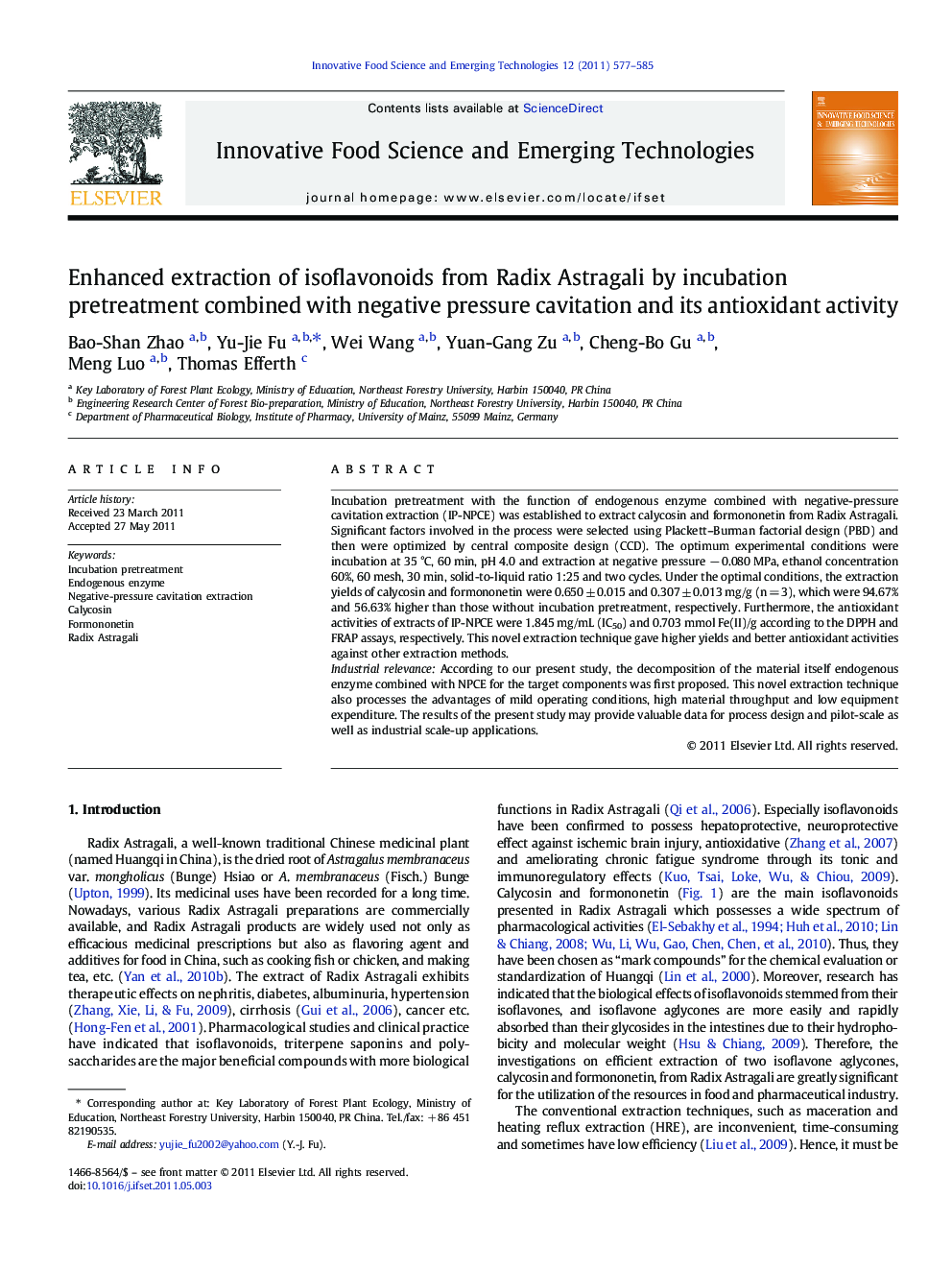| Article ID | Journal | Published Year | Pages | File Type |
|---|---|---|---|---|
| 2087034 | Innovative Food Science & Emerging Technologies | 2011 | 9 Pages |
Incubation pretreatment with the function of endogenous enzyme combined with negative-pressure cavitation extraction (IP-NPCE) was established to extract calycosin and formononetin from Radix Astragali. Significant factors involved in the process were selected using Plackett–Burman factorial design (PBD) and then were optimized by central composite design (CCD). The optimum experimental conditions were incubation at 35 °C, 60 min, pH 4.0 and extraction at negative pressure − 0.080 MPa, ethanol concentration 60%, 60 mesh, 30 min, solid-to-liquid ratio 1:25 and two cycles. Under the optimal conditions, the extraction yields of calycosin and formononetin were 0.650 ± 0.015 and 0.307 ± 0.013 mg/g (n = 3), which were 94.67% and 56.63% higher than those without incubation pretreatment, respectively. Furthermore, the antioxidant activities of extracts of IP-NPCE were 1.845 mg/mL (IC50) and 0.703 mmol Fe(II)/g according to the DPPH and FRAP assays, respectively. This novel extraction technique gave higher yields and better antioxidant activities against other extraction methods.Industrial relevanceAccording to our present study, the decomposition of the material itself endogenous enzyme combined with NPCE for the target components was first proposed. This novel extraction technique also processes the advantages of mild operating conditions, high material throughput and low equipment expenditure. The results of the present study may provide valuable data for process design and pilot-scale as well as industrial scale-up applications.
Research highlights► Endogenous enzyme assisted extraction was first proposed. ► Negative-pressure cavitation extraction is an effective, eco-friendly technology. ► Antioxidant activities of different extracts were evaluated by DPPH and FRAP assays.
